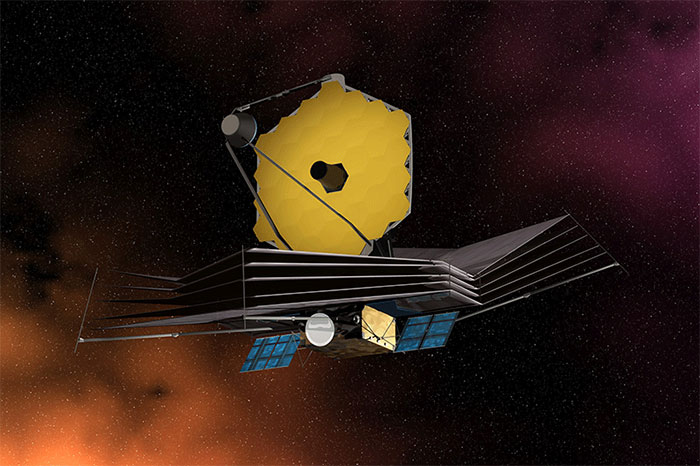The James Webb Space Telescope, the successor to Hubble with the ability to “see into the past,” is set to be launched into orbit next week.
After several years of delays that caused costs to soar well above initial estimates, the James Webb mission—a collaborative project between the National Aeronautics and Space Administration (NASA), the European Space Agency (ESA), and the Canadian Space Agency (CSA)—is scheduled for launch on December 24th aboard an Ariane 5 ECA rocket from the Guiana Space Centre in French Guiana, located on the northeastern coast of South America.
Developed to replace the Hubble Space Telescope, NASA and ESA’s iconic instrument that has been operational in orbit for over three decades, the James Webb is expected to usher in a new era of space exploration.

Simulation of the James Webb Space Telescope. (Photo: NASA).
With a sensitivity improved by 100 times and the capability to observe the universe at longer wavelengths than visible light, this new generation infrared telescope can “see into the past” to gather information about all stages of the universe’s history, from the Big Bang approximately 13.8 billion years ago to the present day. This allows for the exploration of the most distant objects and structures, such as the formation of the first galaxies and the atmospheric characteristics of potentially habitable exoplanets.
“It would be amazing if we could find an Earth-like planet outside our solar system,” said Dr. Knicole Colón at NASA’s Goddard Space Flight Center, a senior member of the project, in an interview with Reuters.
The James Webb is equipped with four scientific instruments, including the Near Infrared Camera (NIRCam), the Near Infrared Spectrograph (NIRSpec), the Mid-Infrared Instrument (MIRI), and the Fine Guidance Sensor/Near Infrared Imager and Slitless Spectrograph (FGS/NIRISS). The telescope’s primary mirror has a diameter of 6.5 meters, which is 2.7 times larger than that of Hubble.
According to NASA’s latest report, the total development and projected operational costs of the James Webb have reached $9.66 billion, nearly double the initial estimate from 2009 by the U.S. Government Accountability Office (GAO). NASA had hoped to launch the telescope in 2011, but the mission has faced continual delays until now.
In October, the James Webb was transported to the launch site in Guiana after a 16-day sea journey from California. After launch, it will take approximately one month to travel to its orbit, which is farther than Hubble’s, beyond the Moon’s orbit.


















































